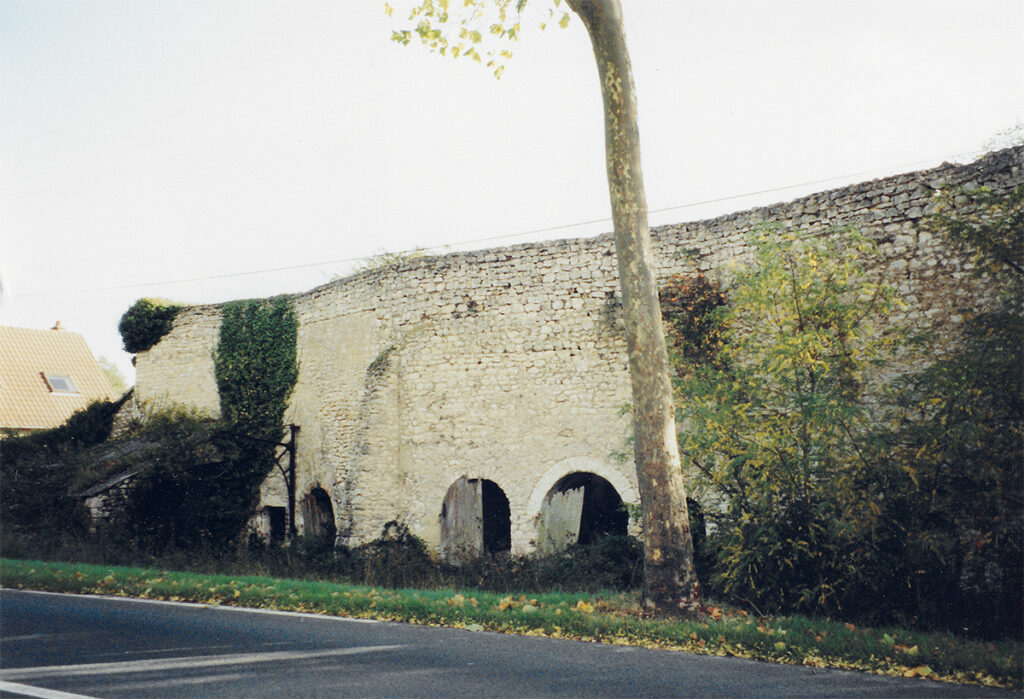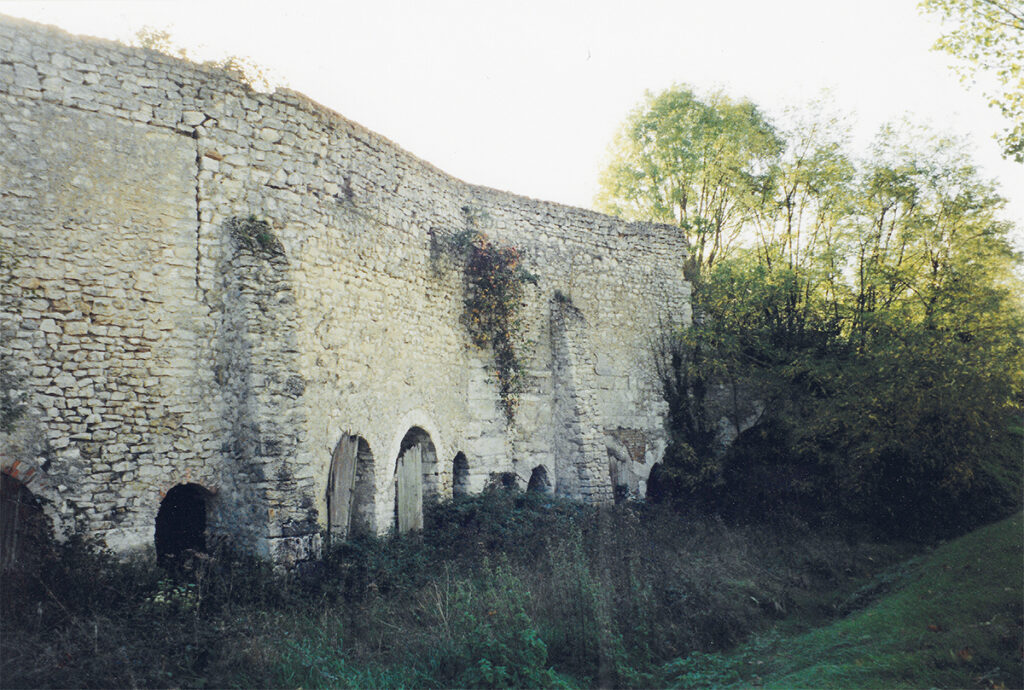The lime kilns
㉑ The Lime kilns
You can read here a panel evoking the lime kilns of Bléré, which no longer exist today. In the years to come, the intersection of rue du Four à Chaux and route de Tours will become a roundabout, the area of which has not yet been determined in November 2022. This temporary sign will be replaced at the end of works.
| « | To go to stage ㉒ → If you are on foot or by bike, follow the path that leads back to le Cher. Then, when you reach ‘le Cher à vélo’ circuit, turn left. About 1.2 km further, you find La Grisolette, a beautiful Norman-style residence. |
» |

Two lime kilns stood at the corner of the rue du Four à Chaux and the route de Tours. They were built by Antoine Nabon of Bléré, in 1797 and 1813. An extraction quarry existed to the north of these kilns but the stones came from another open quarry at ‘Grandes-Fontaines’. In the beginning, they were originally heated by intermittent wood burning using a long flame before the change to coal, which allowed for constant heat and shorter flames.
© Photo : Régine Malveau
These kilns were built into the land and loaded at the top via an
opening which was also accessible from the rear. As well as the
kilns, there was storage space which contained a wheel press
and two vats as there were once vines growing nearby.
This lime plant remained in the Nabon family till the end of the
19th century. In 1910, it became the property of quarry owner,
Sylvain Moreau and his descendants right up to its closure in
1960. The kilns were destroyed in 1998. Five other lime kilns
existed in the commune dating from 18th century (but the only
vestige still visible in 2022 is at 12 rue des Canaux).
© Photo : Régine Malveau

